Papers by Patricia Valensi
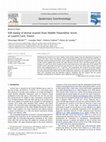
Quaternary Geochronology, 2009
ESR dating was carried out on Cervus elaphus tooth enamel samples from the depositional sequence ... more ESR dating was carried out on Cervus elaphus tooth enamel samples from the depositional sequence of Lazaret Cave, Nice, France. The deposits contain Anteneandertal hominid fossils associated with abundant lithic artefacts and faunal remains. Three samples from the Mousterian occupations in complex CIII (Fouille d'entrée) yielded early uptake (EU) ages between 108 and 125 ka and linear uptake (LU) ages between 133 and 160 ka. Seven samples from the Acheulian levels in the upper part of the complex CII (Fouille d'entrée and Fouille centre) gave EU ages between 113 and 165 ka and LU ages between 147 and 210 ka, with weighted means at 131 AE 7 and 165 AE 9 ka, respectively. The results of six enamel samples from the lower Acheulian levels at Locus VIII, another place in the cave, were discarded because of their decreasing tendency with depth. The US-ESR combination method was also applied and the CSUS-ESR dates were calculated using the ESR-DATA program. Altogether, the data suggest that the Lazaret Acheulian and Mousterian occupations were rapidly formed during OIS 6.
Bone retouchers are more common during the Middle Palaeolithic (from MIS 7 to 3) and are now cons... more Bone retouchers are more common during the Middle Palaeolithic (from MIS 7 to 3) and are now considered as a part of the tool kit of Neanderthals. In Middle Pleistocene and Lower Palaeolithic assemblages, they are few in number and attest to the scarcity of use of bones as material for shaping tools. Some MIS 11 to MIS 9 sites allow the description of the onset of bone use and its multiplication after the MIS 9 attests of another functional relationship between bones and hominins.

Quaternaire, Jan 1, 2010
Les fouilles entreprises depuis quelques années dans plusieurs gisements du sud-est de la France ... more Les fouilles entreprises depuis quelques années dans plusieurs gisements du sud-est de la France fournissent un aperçu précis de la grande faune de la fin du stade isotopique marin 7 (MIS 7) au début du stade 4. Quatre sites ont des niveaux qui ont été datés de l'Éemien. Ils sont situés pour l'un à l'est du Rhône (Bau de l'Aubesier ; Monieux, Vaucluse -Niveau H), et pour les trois autres à l'ouest de ce fleuve, en Ardèche : grotte de Saint-Marcel d'Ardèche (couche u), abri Moula à Soyons (couches XII à XV) et Baume Flandin à Orgnac-l'Aven. D'après le stade évolutif du tahr (Hemitragus cedrensis) et du cheval (Equus cf. taubachensis), la couche H1 du Bau de l'Aubesier doit être légèrement vieillie (MIS 6). Les trois localités ardéchoises ont livré un assemblage faunique tempéré avec comme éléments communs le daim (Dama sp.), le cerf élaphe (Cervus elaphus), le chevreuil (Capreolus capreolus), le sanglier (Sus scrofa) et chez les carnivores, un ours de type deningeri. Le début du sous-stade 5e est caractérisé par la persistance du tahr de la fin du Pléistocène moyen, H. bonali. Il est ensuite relayé par le bouquetin de la lignée du Caucase qui fait sa première apparition en Europe sudoccidentale (Capra caucasica praepyrenaica). La fin du MIS 5e est marquée par l'essor du bouquetin de la lignée alpine (C. ibex), déjà présent sur le territoire depuis la fin du Pléistocène moyen ; son stade évolutif le rattache à la forme du début du Weichselien, C. ibex cebennarum. Les équidés sont représentés par l'hémione sauvage (Equus hydruntinus) et par un cheval proche d'Equus taubachensis mais néanmoins différent de la forme type des niveaux éemiens de Taubach. Tout au long de l'interglaciaire, les félins sont présents et diversifiés : lion (Panthera (Leo) spelaea), panthère (P. pardus), lynx (Lynx spelaeus.) et chat sauvage (Felis silvestris). L'existence du dhole (Cuon alpinus) et de l'ours du Tibet (Ursus thibetanus) est attestée au début du sous-stade 5e. Pour ce dernier, il s'agit de sa dernière mention en Europe. La fin de l'Éemien voit l'apparition de la hyène des cavernes (Crocuta spelaea).
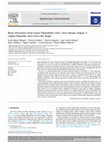
Quaternary International, 2015
Bone retouchers are more common during the Middle Palaeolithic (from MIS 7 to 3) and are now cons... more Bone retouchers are more common during the Middle Palaeolithic (from MIS 7 to 3) and are now considered as a part of the tool kit of Neanderthals. In Middle Pleistocene and Lower Palaeolithic assemblages, they are few in number and attest to the scarcity of use of bones as material for shaping tools. Some MIS 11 to MIS 9 sites allow the description of the onset of bone use and its multiplication after the MIS 9 attests of another functional relationship between bones and hominins.
Our aim is to provide details about the bone retouchers found in some MIS 11–9 sites with lithic assemblages, often described as late Acheulean, that include handaxes and heavy-duty tools. The sites sampled are Terra Amata (south-east France, MIS 11), Orgnac 3 (south-east France, MIS 9–8), Cagny l'Epinette (Northern France, MIS 9) and Cueva del Angel (Spain, MIS 11–7). The study examined the number of retouchers, their support and type of animal, types of marks, bone sizes, and the lithic and faunal contexts.
While bone retouchers sometimes total several hundreds of pieces in Middle Palaeolithic sites, our Lower Palaeolithic corpus yields generally between 1 and 6 retouchers. Retouchers are always made on fragments of bones from the main hunted species (horses, large bovids and cervids). Marks on bone retouchers indicate specific processes for selecting fragments of bones, and hypotheses are provided on their method of use. Categories may be suggested according to their types of support (diaphysis, epiphysis) as well as their types of marks, and allow us to suggest hypotheses for the retouching of both bifacial tools and flake-tools as well as for direct percussion. The results are compared with other sites from which bone retouchers were already published (Cueva del Bolomor, Gran Dolina TD10 in Spain, and La Micoque in France and Qesem in Israel). They are also compared with younger Acheulean assemblages such as Lazaret cave in France.
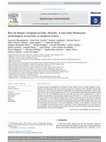
Quaternary International, 2015
The Bois-de-Riquet archeological site (Lezignan-la-Cebe, Herault, France) provides significant pa... more The Bois-de-Riquet archeological site (Lezignan-la-Cebe, Herault, France) provides significant paleontological and archeological data about the first occupations of Western Europe. Although only partially excavated, the site has already yielded an exceptionally rich paleontological assemblage as well as some stone artefacts. The archeostratigraphical unit “US2” is encased within a basalt flowstone radiometrically dated to 1.57 Ma. The sedimentary infill has preserved large and small mammal fossils, as well as coprolites. Biochronological interpretations suggest an age of around 1.3e1.1 Ma for the accumulation. A few basalt artefacts were exhumed alongside the fossil bones. Interpretation of the lithics has required the elaboration of a strict selection protocol based upon extensive knapping experiments with local basalt. This paper presents results from the interdisciplinary study of the Bois-de-Riquet site in the aim of contextualizing these discoveries. The microstratigraphical analysis of the deposits is presented with recent geological interpretations in order to contribute a better understanding of the main features of this assemblage, and its remarkable preservation within the thermal and textural boundary between a basalt flowstone's base and its entablature.
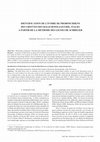
Bulletin du Musée d’Anthropologie Préhistorique de Monaco, 54, 2014
Les grottes de Balzi Rossi ou grottes de Grimaldi ont livré plusieurs restes de Proboscidiens. Da... more Les grottes de Balzi Rossi ou grottes de Grimaldi ont livré plusieurs restes de Proboscidiens. Dans certains niveaux moustériens de la grotte du Prince et de la grotte du Cavillon, ils ne sont représentés que par des fragments de défenses très incomplètes ce qui rend leur attribution taxinomique délicate. Seule la méthode des lignes de Schreger appliquée sur ce type de matériel a permis de les déterminer. Les résultats permettent de préciser la biostratigraphie des sites. L’éléphant antique Palaeoloxodon antiquus est présent dans les dépôts du MIS 5 au MIS 3, ce qui correspond aux dernières occurrences de l’espèce sur le continent d’Europe occidentale. D’autre part, la présence du mammouth laineux Mammuthus primigenius est attestée pour la première fois dans le Moustérien de Ligurie, dans des dépôts du MIS 4.
The Balzi Rossi caves or Grimaldi caves have yielded several Proboscidean remains. In some of the Mousterian levels of Prince cave and Cavillon Cave they only consist of very incomplete tusk fragments, which makes taxinomical attribution difficult. The use of Schreger lines is thus the only way of identifying these types of remains. The results provide information on site biostratigraphy. The straight-tusked elephant Palaeoloxodon antiquus is present in deposits ranging from MIS 5 to MIS 3, which correspond to the last occurrences of this species on the Western European continent. Moreover, the wooly mammoth Mammuthus primigenius is recorded for the first time in the Ligurian Mousterian, in MIS 4 deposits.
Archeologia, 449, Nov 2007
In H. de Lumley dir. «Terra Amata, Nice, Alpes-Maritimes, France » Tome II», Edition CNRS, Paris, 2011
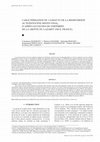
Quaternaire, 2010
La grotte du Lazaret a livré de nombreuses industries acheuléennes, plusieurs restes d’anténéande... more La grotte du Lazaret a livré de nombreuses industries acheuléennes, plusieurs restes d’anténéanderthaliens et de très nombreux restes de vertébrés (amphibiens, reptiles, oiseaux et mammifères) reflétant une importante richesse spécifique. Les différentes associations fauniques, ainsi que le degré d’évolution de certaines espèces, permettent d’attribuer les dépôts archéologiques au Pléistocène moyen final (MIS 6), en accord avec les datations radiométriques. L’étude interdisciplinaire des ensembles stratigraphiques CIII et CII supérieur a permis de reconstituer le cadre paléoclimatique et paléoenvironnemental, et de mettre en évidence une certaine variété de paysages continentaux liés à un climat relativement froid, toutefois tempéré par la position méridionale du site. La présence d’espèces de climat froid actuellement disparues du biome méditerranéen implique l’existence de conditions plus fraîches et plus humides qu’aujourd’hui. Des fluctuations sont cependant perceptibles tout au long de la séquence au travers des variations de faunes, au niveau spécifique et quantitatif, montrant une relative intensification du froid et une ouverture progressive du milieu entre les ensembles CII sup. et CIII. Le spectre faunique de la grotte du Lazaret fournit un reflet assez juste de la paléobiodiversité dans le Sud-Est de la France à la fin du Pléistocène moyen (MIS6).

Quaternaire, 2010
Les fouilles entreprises depuis quelques années dans plusieurs gisements du Sud-Est de la France ... more Les fouilles entreprises depuis quelques années dans plusieurs gisements du Sud-Est de la France fournissent un aperçu précis de la grande faune de la fin du stade isotopique marin 7 (MIS 7) au début du stade 4. Quatre sites ont des niveaux qui ont été datés de l’Éemien. Ils sont situés pour l’un à l’est du Rhône (Bau de l’Aubesier ; Monieux, Vaucluse - Niveau H), et pour les trois autres à l’ouest de ce fleuve, en Ardèche : grotte de Saint-Marcel d’Ardèche (couche u), abri Moula à Soyons (couches XII à XV) et Baume Flandin à Orgnac-l’Aven. D’après le stade évolutif du tahr (Hemitragus
cedrensis) et du cheval (Equus cf. taubachensis), la couche H1 du Bau de l’Aubesier doit être légèrement vieillie (MIS 6). Les trois localités ardéchoises ont livré un assemblage faunique tempéré avec comme éléments communs le daim (Dama sp.), le cerf élaphe (Cervus elaphus), le chevreuil (Capreolus
capreolus), le sanglier (Sus scrofa) et chez les carnivores, un ours de type deningeri. Le début du sous-stade 5e (MIS 5e) est caractérisé par la persistance du tahr de la fin du Pléistocène moyen, H. bonali. Il est ensuite relayé par le bouquetin de la lignée du Caucase qui fait sa première apparition en Europe sud-occidentale (Capra caucasica praepyrenaica). La fin du MIS 5e est marquée par l’essor du bouquetin de la lignée alpine (C. ibex), déjà présent sur le territoire depuis la fin du Pléistocène moyen; son stade évolutif le rattache à la forme du début du Weichselien, C. ibex cebennarum. Les équidés sont représentés par Equus hydruntinus et par un cheval proche d’Equus taubachensis mais néanmoins différent de la forme type des niveaux éemiens de Taubach. Tout au long de l’interglaciaire, les félins sont présents et diversifiés : lion (Panthera (Leo) spelaea), panthère (P. pardus), lynx (Lynx spelaeus) et chat sauvage (Felis silvestris). L’existence du dhole (Cuon alpinus) et de l’ours du Tibet (Ursus thibetanus) est attestée au début du
sous-stade 5e. Pour ce dernier, il s’agit de sa dernière mention en Europe. La fin de l’Éemien voit l’apparition de la hyène des cavernes (Crocuta spelaea).
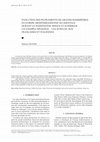
Quaternaire, 2009
La région des Alpes-Maritimes (France) et de Ligurie (Italie) est riche en sites préhistoriques d... more La région des Alpes-Maritimes (France) et de Ligurie (Italie) est riche en sites préhistoriques d’âge Pléistocène moyen et supérieur. Une biochronologie des gisements est proposée à partir des associations fauniques et des stades évolutifs des espèces : Terra Amata (MIS 11), Lazaret (MIS 6), Caverna delle Fate (MIS 5 et 4), Madonna dell’Arma (MIS 5), Arma delle Manie (MIS 4), Santa Lucia Superiore (MIS 4), San Francesco (MIS 3). Il en ressort des particularités régionales liées à la position géographique des gisements, comme la persistance de taxons archaïques au Pléistocène supérieur (Hyaena prisca, Cuon priscus) et le maintien d’importantes populations de faunes tempérées au cours des périodes glaciaires (Cervus elaphus, Palaeoloxodon antiquus).
EVOLUTION OF LARGE MAMMAL POPULATIONS IN WEST MEDITERRANEAN EUROPE DURING MIDDLE AND UPPER PLEISTOCENE. A REGIONAL EXAMPLE: FRENCH AND ITALIAN SOUTHERN ALPS.
Alpes-Maritimes (France) and Liguria (Italy) area contains numerous prehistoric sites dated from Upper and Middle Pleistocene. A biochronology of the sites is drawn after faunal associations and evolutionary stage of taxa: Terra Amata (MIS 11), Lazaret (MIS 6), Caverna delle Fate (MIS 5 and 4), Madonna dell’Arma (MIS 5), Arma delle Manie (MIS 4), Santa Lucia Superiore (MIS 4), San Francesco (MIS 3). It highlights regional
features linked to geographical position of the sites: persistence of archaïc taxa during Upper Pleistocene (Hyaena prisca, Cuon priscus) and maintenance of large populations of temperate species during glacial periods (Cervus elaphus, Palaeoloxodon antiquus)
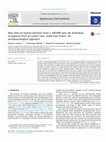
QI, 2013
Patricia Valensi, Véronique Michel, Khalid El Guennouni, Marie Liouville.
The UA 25 archaeostrat... more Patricia Valensi, Véronique Michel, Khalid El Guennouni, Marie Liouville.
The UA 25 archaeostratigraphic unit of Lazaret cave is an exceptional Acheulean occupation level with abundant lithic and bone material and reveals a clear organization of activities carried out in the cave. In this paper, large mammals are studied from an archaeozoological perspective using a variety of methods of analysis, in order to increase our understanding of the behavior, way of life and environment of the Lazaret Acheuleans. During one autumn hunting episode, twenty-three red deer, six ibexes, three
aurochs and one roe deer were slaughtered. For the most part, it appears that Anteneanderthals processed these carcasses inside the cave. They then left more than 600 bone remains piled into a heap with a diameter of 80 cm in the middle of the cave. The study of diversity indexes points towards selective red deer hunting, independently of the prey available in the environment. On the other hand, as far as the deer is concerned, hunted animals do not seem to have been selected within the herd on the basis of factors such as age or sex. The presence of the ibex, the second most hunted species at the site, seems to be directly linked to climatic conditions and its relative abundance in the environment.

Editions APDCA, Antibes, 2011
Par Jean-Marc Landry et Patricia Valensi
S’il est encore difficile d’articuler une date précise ... more Par Jean-Marc Landry et Patricia Valensi
S’il est encore difficile d’articuler une date précise sur l'origine du chien, les recherches en biologie moléculaire et en archéozoologie semblent s’accorder pour placer sa domestication durant le Paléolithique supérieur, bien que certains auteurs annoncent une origine plus ancienne. En revanche, ces recherches ne permettent pas d’expliquer quels sont les mécanismes ethologiques et sélectifs qui ont permis de passer du loup au chien. Elles permettent encore moins de comprendre quel est le nombre minimal d’humains nécessaires pour « sélectionner » un nombre minimal de loups dans l’espace et le temps pour en faire des chiens.
Cette contribution cherche à synthétiser les connaissances interdisciplinaires de la domestication du loup à l'époque du paléolithique supérieur.
Mots clés : Paléolithique, domestication, sélection, commensalisme, loup
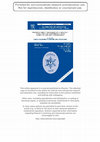
Quaternary International, 2012
The Moula-Guercy cave, in the southeast of France, contains an important stratigraphic sequence a... more The Moula-Guercy cave, in the southeast of France, contains an important stratigraphic sequence attributed to the Mousterian, of Middle and Upper Pleistocene age. The faunal assemblages are rich and have been biostratigraphically well dated. After methodical excavations from 1992 to 1999, layer XV, representing a temperate optimum (MIS 5.5), yielded over a hundred Neanderthal remains with evidence of cannibalism on six specimens. This paper presents the detailed and hitherto unpublished results of the archaeozoological study of the large mammals from this level. In 1999, relatively classical analytical methods were applied in order to compare the results with those of the cannibalised human remains, studied separately.The fauna from layer XV is not abundant but is very diversified, represented by over 1500 remains from 23 different species. The red deer is the second most consumed species after the human species. Layer XV appears to correspond to a summer or autumn hunting halt.
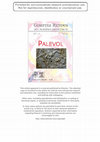
Comptes Rendus Palevol, 2011
La Baume du Houx, dans le Var, située en bord de falaise, a livré un assemblage osseux constitué ... more La Baume du Houx, dans le Var, située en bord de falaise, a livré un assemblage osseux constitué essentiellement de phalanges d’ongulés domestiques et de nombreux restes digérés. Cette faune a été récoltée en surface avec de nombreux tessons de poterie attribués probablement à l’âge du Bronze ou au premier âge du Fer, mais dont la contemporanéité avec les ossements n’est pas démontrée. L’étude a été conduite sous diverses méthodes taphonomiques, afin de déterminer l’agent responsable de l’accumulation osseuse, telles que la composition de l’assemblage, la représentation des éléments anatomiques et l’observation des dommages occasionnés sur les os. Le fort degré de digestion observé sur le matériel et la taille des proies correspondent à une accumulation observée dans un nid de gypaète barbu. Le contexte du site, en falaise, plaide en faveur de ce résultat. Il s’agit ici de la première découverte d’un nid de gypaète barbu en Provence. Chronologiquement, la présence d’espèces domestiques digérées par le vautour situe l’occupation du nid à partir du Néolithique, sans plus de précision.The Baume du Houx, in the Var department of France, situated on the edge of a cliff, has yielded a bone assemblage composed mainly of domesticated ungulate phalanges and numerous digested remains. This fauna was collected from the surface, along with numerous potsherds probably attributable to the Bronze Age or the Early Iron Age, but their contemporaneity with the fauna has not been demonstrated. This study has employed diverse taphonomic methods in order to determine the agent of bone accumulation, such as assemblage composition, skeletal part representation, and bone damage patterns. The high degree of digestion observed on the material and the size of the prey correspond with an accumulation observed in a bearded vulture nest. The site's context, on a cliff, supports this conclusion. This is the first discovery of a bearded vulture nest in Provence region. Chronologically, the presence of domestic species digested by the vulture places the nest's occupation sometime after the Neolithic, without any further precision.
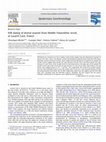
Quaternary Geochronology, 2009
ESR dating was carried out on Cervus elaphus tooth enamel samples from the depositional sequence ... more ESR dating was carried out on Cervus elaphus tooth enamel samples from the depositional sequence of Lazaret Cave, Nice, France. The deposits contain Anteneandertal hominid fossils associated with abundant lithic artefacts and faunal remains. Three samples from the Mousterian occupations in complex CIII (Fouille d'entrée) yielded early uptake (EU) ages between 108 and 125 ka and linear uptake (LU) ages between 133 and 160 ka. Seven samples from the Acheulian levels in the upper part of the complex CII (Fouille d'entrée and Fouille centre) gave EU ages between 113 and 165 ka and LU ages between 147 and 210 ka, with weighted means at 131 ± 7 and 165 ± 9 ka, respectively. The results of six enamel samples from the lower Acheulian levels at Locus VIII, another place in the cave, were discarded because of their decreasing tendency with depth. The US–ESR combination method was also applied and the CSUS–ESR dates were calculated using the ESR-DATA program. Altogether, the data suggest that the Lazaret Acheulian and Mousterian occupations were rapidly formed during OIS 6.
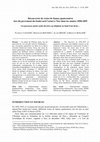
Ann. Mus. Hist. nat. Nice, 2009
The discovery in 1858-1859 of quaternary rhinoceros and elephant remains on the outskirts of Nice... more The discovery in 1858-1859 of quaternary rhinoceros and elephant remains on the outskirts of Nice during the construction of today’s boulevard Carnot, the lower part of the new Villefranche road - “La Basse Corniche”, was mentioned by a number of nineteenth century authors. Several of these pieces were deposited with the Natural History Museum of Nice (Barla Museum) where they are preserved today.
The bones have been examined again recently in the context of the Terra Amata monograph. It is thought that they may have originally resurfaced during the formation of sediments which are contemporary to the acheulean marine beach (stratigraphic ensemble C1a) at the Terra Amata site (isotopic stage 11 – 400,000 years) which is situated a hundred meters from the find. Part of the same series also in the Museum’s collection was found not to be a proboscidian but a quaternary great Megatherinae, most probably imported to France by the Niçois naturalist, Jean-Baptiste Verany from expeditions to South America.








Uploads
Papers by Patricia Valensi
Our aim is to provide details about the bone retouchers found in some MIS 11–9 sites with lithic assemblages, often described as late Acheulean, that include handaxes and heavy-duty tools. The sites sampled are Terra Amata (south-east France, MIS 11), Orgnac 3 (south-east France, MIS 9–8), Cagny l'Epinette (Northern France, MIS 9) and Cueva del Angel (Spain, MIS 11–7). The study examined the number of retouchers, their support and type of animal, types of marks, bone sizes, and the lithic and faunal contexts.
While bone retouchers sometimes total several hundreds of pieces in Middle Palaeolithic sites, our Lower Palaeolithic corpus yields generally between 1 and 6 retouchers. Retouchers are always made on fragments of bones from the main hunted species (horses, large bovids and cervids). Marks on bone retouchers indicate specific processes for selecting fragments of bones, and hypotheses are provided on their method of use. Categories may be suggested according to their types of support (diaphysis, epiphysis) as well as their types of marks, and allow us to suggest hypotheses for the retouching of both bifacial tools and flake-tools as well as for direct percussion. The results are compared with other sites from which bone retouchers were already published (Cueva del Bolomor, Gran Dolina TD10 in Spain, and La Micoque in France and Qesem in Israel). They are also compared with younger Acheulean assemblages such as Lazaret cave in France.
The Balzi Rossi caves or Grimaldi caves have yielded several Proboscidean remains. In some of the Mousterian levels of Prince cave and Cavillon Cave they only consist of very incomplete tusk fragments, which makes taxinomical attribution difficult. The use of Schreger lines is thus the only way of identifying these types of remains. The results provide information on site biostratigraphy. The straight-tusked elephant Palaeoloxodon antiquus is present in deposits ranging from MIS 5 to MIS 3, which correspond to the last occurrences of this species on the Western European continent. Moreover, the wooly mammoth Mammuthus primigenius is recorded for the first time in the Ligurian Mousterian, in MIS 4 deposits.
cedrensis) et du cheval (Equus cf. taubachensis), la couche H1 du Bau de l’Aubesier doit être légèrement vieillie (MIS 6). Les trois localités ardéchoises ont livré un assemblage faunique tempéré avec comme éléments communs le daim (Dama sp.), le cerf élaphe (Cervus elaphus), le chevreuil (Capreolus
capreolus), le sanglier (Sus scrofa) et chez les carnivores, un ours de type deningeri. Le début du sous-stade 5e (MIS 5e) est caractérisé par la persistance du tahr de la fin du Pléistocène moyen, H. bonali. Il est ensuite relayé par le bouquetin de la lignée du Caucase qui fait sa première apparition en Europe sud-occidentale (Capra caucasica praepyrenaica). La fin du MIS 5e est marquée par l’essor du bouquetin de la lignée alpine (C. ibex), déjà présent sur le territoire depuis la fin du Pléistocène moyen; son stade évolutif le rattache à la forme du début du Weichselien, C. ibex cebennarum. Les équidés sont représentés par Equus hydruntinus et par un cheval proche d’Equus taubachensis mais néanmoins différent de la forme type des niveaux éemiens de Taubach. Tout au long de l’interglaciaire, les félins sont présents et diversifiés : lion (Panthera (Leo) spelaea), panthère (P. pardus), lynx (Lynx spelaeus) et chat sauvage (Felis silvestris). L’existence du dhole (Cuon alpinus) et de l’ours du Tibet (Ursus thibetanus) est attestée au début du
sous-stade 5e. Pour ce dernier, il s’agit de sa dernière mention en Europe. La fin de l’Éemien voit l’apparition de la hyène des cavernes (Crocuta spelaea).
EVOLUTION OF LARGE MAMMAL POPULATIONS IN WEST MEDITERRANEAN EUROPE DURING MIDDLE AND UPPER PLEISTOCENE. A REGIONAL EXAMPLE: FRENCH AND ITALIAN SOUTHERN ALPS.
Alpes-Maritimes (France) and Liguria (Italy) area contains numerous prehistoric sites dated from Upper and Middle Pleistocene. A biochronology of the sites is drawn after faunal associations and evolutionary stage of taxa: Terra Amata (MIS 11), Lazaret (MIS 6), Caverna delle Fate (MIS 5 and 4), Madonna dell’Arma (MIS 5), Arma delle Manie (MIS 4), Santa Lucia Superiore (MIS 4), San Francesco (MIS 3). It highlights regional
features linked to geographical position of the sites: persistence of archaïc taxa during Upper Pleistocene (Hyaena prisca, Cuon priscus) and maintenance of large populations of temperate species during glacial periods (Cervus elaphus, Palaeoloxodon antiquus)
The UA 25 archaeostratigraphic unit of Lazaret cave is an exceptional Acheulean occupation level with abundant lithic and bone material and reveals a clear organization of activities carried out in the cave. In this paper, large mammals are studied from an archaeozoological perspective using a variety of methods of analysis, in order to increase our understanding of the behavior, way of life and environment of the Lazaret Acheuleans. During one autumn hunting episode, twenty-three red deer, six ibexes, three
aurochs and one roe deer were slaughtered. For the most part, it appears that Anteneanderthals processed these carcasses inside the cave. They then left more than 600 bone remains piled into a heap with a diameter of 80 cm in the middle of the cave. The study of diversity indexes points towards selective red deer hunting, independently of the prey available in the environment. On the other hand, as far as the deer is concerned, hunted animals do not seem to have been selected within the herd on the basis of factors such as age or sex. The presence of the ibex, the second most hunted species at the site, seems to be directly linked to climatic conditions and its relative abundance in the environment.
S’il est encore difficile d’articuler une date précise sur l'origine du chien, les recherches en biologie moléculaire et en archéozoologie semblent s’accorder pour placer sa domestication durant le Paléolithique supérieur, bien que certains auteurs annoncent une origine plus ancienne. En revanche, ces recherches ne permettent pas d’expliquer quels sont les mécanismes ethologiques et sélectifs qui ont permis de passer du loup au chien. Elles permettent encore moins de comprendre quel est le nombre minimal d’humains nécessaires pour « sélectionner » un nombre minimal de loups dans l’espace et le temps pour en faire des chiens.
Cette contribution cherche à synthétiser les connaissances interdisciplinaires de la domestication du loup à l'époque du paléolithique supérieur.
Mots clés : Paléolithique, domestication, sélection, commensalisme, loup
The bones have been examined again recently in the context of the Terra Amata monograph. It is thought that they may have originally resurfaced during the formation of sediments which are contemporary to the acheulean marine beach (stratigraphic ensemble C1a) at the Terra Amata site (isotopic stage 11 – 400,000 years) which is situated a hundred meters from the find. Part of the same series also in the Museum’s collection was found not to be a proboscidian but a quaternary great Megatherinae, most probably imported to France by the Niçois naturalist, Jean-Baptiste Verany from expeditions to South America.
Our aim is to provide details about the bone retouchers found in some MIS 11–9 sites with lithic assemblages, often described as late Acheulean, that include handaxes and heavy-duty tools. The sites sampled are Terra Amata (south-east France, MIS 11), Orgnac 3 (south-east France, MIS 9–8), Cagny l'Epinette (Northern France, MIS 9) and Cueva del Angel (Spain, MIS 11–7). The study examined the number of retouchers, their support and type of animal, types of marks, bone sizes, and the lithic and faunal contexts.
While bone retouchers sometimes total several hundreds of pieces in Middle Palaeolithic sites, our Lower Palaeolithic corpus yields generally between 1 and 6 retouchers. Retouchers are always made on fragments of bones from the main hunted species (horses, large bovids and cervids). Marks on bone retouchers indicate specific processes for selecting fragments of bones, and hypotheses are provided on their method of use. Categories may be suggested according to their types of support (diaphysis, epiphysis) as well as their types of marks, and allow us to suggest hypotheses for the retouching of both bifacial tools and flake-tools as well as for direct percussion. The results are compared with other sites from which bone retouchers were already published (Cueva del Bolomor, Gran Dolina TD10 in Spain, and La Micoque in France and Qesem in Israel). They are also compared with younger Acheulean assemblages such as Lazaret cave in France.
The Balzi Rossi caves or Grimaldi caves have yielded several Proboscidean remains. In some of the Mousterian levels of Prince cave and Cavillon Cave they only consist of very incomplete tusk fragments, which makes taxinomical attribution difficult. The use of Schreger lines is thus the only way of identifying these types of remains. The results provide information on site biostratigraphy. The straight-tusked elephant Palaeoloxodon antiquus is present in deposits ranging from MIS 5 to MIS 3, which correspond to the last occurrences of this species on the Western European continent. Moreover, the wooly mammoth Mammuthus primigenius is recorded for the first time in the Ligurian Mousterian, in MIS 4 deposits.
cedrensis) et du cheval (Equus cf. taubachensis), la couche H1 du Bau de l’Aubesier doit être légèrement vieillie (MIS 6). Les trois localités ardéchoises ont livré un assemblage faunique tempéré avec comme éléments communs le daim (Dama sp.), le cerf élaphe (Cervus elaphus), le chevreuil (Capreolus
capreolus), le sanglier (Sus scrofa) et chez les carnivores, un ours de type deningeri. Le début du sous-stade 5e (MIS 5e) est caractérisé par la persistance du tahr de la fin du Pléistocène moyen, H. bonali. Il est ensuite relayé par le bouquetin de la lignée du Caucase qui fait sa première apparition en Europe sud-occidentale (Capra caucasica praepyrenaica). La fin du MIS 5e est marquée par l’essor du bouquetin de la lignée alpine (C. ibex), déjà présent sur le territoire depuis la fin du Pléistocène moyen; son stade évolutif le rattache à la forme du début du Weichselien, C. ibex cebennarum. Les équidés sont représentés par Equus hydruntinus et par un cheval proche d’Equus taubachensis mais néanmoins différent de la forme type des niveaux éemiens de Taubach. Tout au long de l’interglaciaire, les félins sont présents et diversifiés : lion (Panthera (Leo) spelaea), panthère (P. pardus), lynx (Lynx spelaeus) et chat sauvage (Felis silvestris). L’existence du dhole (Cuon alpinus) et de l’ours du Tibet (Ursus thibetanus) est attestée au début du
sous-stade 5e. Pour ce dernier, il s’agit de sa dernière mention en Europe. La fin de l’Éemien voit l’apparition de la hyène des cavernes (Crocuta spelaea).
EVOLUTION OF LARGE MAMMAL POPULATIONS IN WEST MEDITERRANEAN EUROPE DURING MIDDLE AND UPPER PLEISTOCENE. A REGIONAL EXAMPLE: FRENCH AND ITALIAN SOUTHERN ALPS.
Alpes-Maritimes (France) and Liguria (Italy) area contains numerous prehistoric sites dated from Upper and Middle Pleistocene. A biochronology of the sites is drawn after faunal associations and evolutionary stage of taxa: Terra Amata (MIS 11), Lazaret (MIS 6), Caverna delle Fate (MIS 5 and 4), Madonna dell’Arma (MIS 5), Arma delle Manie (MIS 4), Santa Lucia Superiore (MIS 4), San Francesco (MIS 3). It highlights regional
features linked to geographical position of the sites: persistence of archaïc taxa during Upper Pleistocene (Hyaena prisca, Cuon priscus) and maintenance of large populations of temperate species during glacial periods (Cervus elaphus, Palaeoloxodon antiquus)
The UA 25 archaeostratigraphic unit of Lazaret cave is an exceptional Acheulean occupation level with abundant lithic and bone material and reveals a clear organization of activities carried out in the cave. In this paper, large mammals are studied from an archaeozoological perspective using a variety of methods of analysis, in order to increase our understanding of the behavior, way of life and environment of the Lazaret Acheuleans. During one autumn hunting episode, twenty-three red deer, six ibexes, three
aurochs and one roe deer were slaughtered. For the most part, it appears that Anteneanderthals processed these carcasses inside the cave. They then left more than 600 bone remains piled into a heap with a diameter of 80 cm in the middle of the cave. The study of diversity indexes points towards selective red deer hunting, independently of the prey available in the environment. On the other hand, as far as the deer is concerned, hunted animals do not seem to have been selected within the herd on the basis of factors such as age or sex. The presence of the ibex, the second most hunted species at the site, seems to be directly linked to climatic conditions and its relative abundance in the environment.
S’il est encore difficile d’articuler une date précise sur l'origine du chien, les recherches en biologie moléculaire et en archéozoologie semblent s’accorder pour placer sa domestication durant le Paléolithique supérieur, bien que certains auteurs annoncent une origine plus ancienne. En revanche, ces recherches ne permettent pas d’expliquer quels sont les mécanismes ethologiques et sélectifs qui ont permis de passer du loup au chien. Elles permettent encore moins de comprendre quel est le nombre minimal d’humains nécessaires pour « sélectionner » un nombre minimal de loups dans l’espace et le temps pour en faire des chiens.
Cette contribution cherche à synthétiser les connaissances interdisciplinaires de la domestication du loup à l'époque du paléolithique supérieur.
Mots clés : Paléolithique, domestication, sélection, commensalisme, loup
The bones have been examined again recently in the context of the Terra Amata monograph. It is thought that they may have originally resurfaced during the formation of sediments which are contemporary to the acheulean marine beach (stratigraphic ensemble C1a) at the Terra Amata site (isotopic stage 11 – 400,000 years) which is situated a hundred meters from the find. Part of the same series also in the Museum’s collection was found not to be a proboscidian but a quaternary great Megatherinae, most probably imported to France by the Niçois naturalist, Jean-Baptiste Verany from expeditions to South America.